The buttons in the toolbar at the top of the window provide several ways to navigate quickly through documents with more than one page. (See also "The Context Menu" and "Keyboard Shortcuts").
By default, the DjVu Browser Plug-in displays only one page at a time.

The DjVu toolbar displays several means of navigating to another page within a DjVu document, as shown below. (If your browser window is not fully expanded, some or all of these may be hidden. For more information, see "The DjVu Toolbar".)

![]() takes you to the document’s first page.
takes you to the document’s first page.
![]() takes you to the previous page.
takes you to the previous page.
![]() takes you to the next page.
takes you to the next page.
![]() takes you to the document’s last page.
takes you to the document’s last page.
The “Select Page” combo box on the DjVu toolbar displays the number of the current page along with the total number of pages in the document. In a double-page view the number of the left hand page is displayed.
Click the down arrow  to extend the drop-down list and select the desired page, as shown below.
to extend the drop-down list and select the desired page, as shown below.
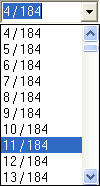
You can retrace your path through any previous view (zoom level, panning location, page, etc) using the “Go to Previous View” and “Go to Next View” buttons. (If your browser window is not fully expanded, one or both of these may be hidden. For more information, see "The DjVu Toolbar".)
![]() takes you to the previous view in your viewing history, like your browser’s “Back” button. Note: The “Go to Previous View” button is not enabled until after you have used one of the page navigation arrows.
takes you to the previous view in your viewing history, like your browser’s “Back” button. Note: The “Go to Previous View” button is not enabled until after you have used one of the page navigation arrows.
![]() takes you to the next view in your viewing history. Note: The “Go to Next View” button is not enabled until you have used the “Go to Previous View” button or menu item.
takes you to the next view in your viewing history. Note: The “Go to Next View” button is not enabled until you have used the “Go to Previous View” button or menu item.
Thumbnail View:
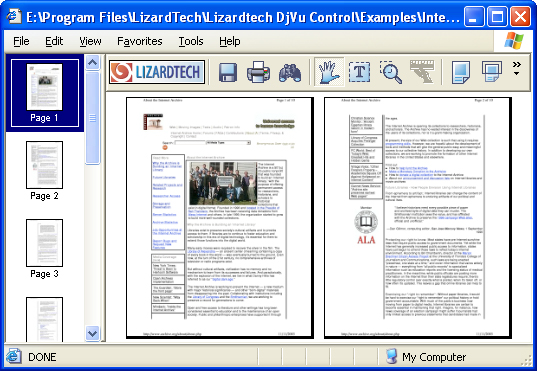
Outline View:
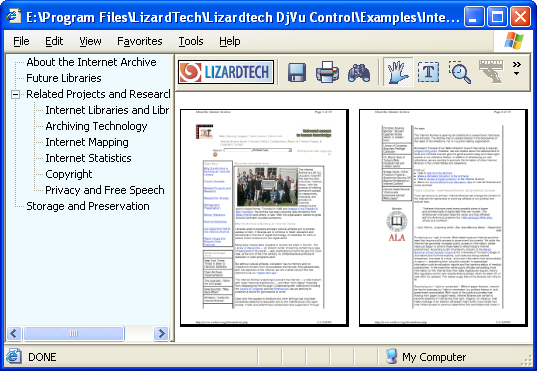
By default the navigation pane is hidden to give maximum area to the opened document in the main window. Specifically, this means the “Hide Navigation Pane” option is selected in the Layout submenu of the context menu.
To show the navigation pane:
From the context menu, choose Layout. The Layout submenu appears.
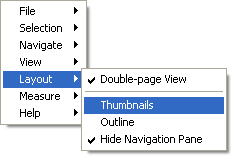
Alternatively, access the navigation pane by clicking the Show Thumbnails button ![]() on the DjVu toolbar.
on the DjVu toolbar.
You can make the navigation pane wider or narrower. This makes the thumbs bigger or smaller or, if the navigation pane is displaying an outline, shows more text. To adjust the navigation pane width, click the line separating the navigation pane from the main window and drag the line left or right.
Many of the navigation operations described above can be performed using the context menu. From the context menu choose Navigate, then choose the desired action, as shown below.
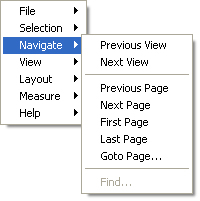
The “Go To Page” menu option brings up a small dialog box, as shown below. Enter a page number, or use the up or down arrows to change the page number, then click OK.
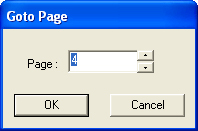
The “Find…” menu option brings up the “Find Text” dialog box. For more information, see "Working with Text".
Note: The “Previous View” menu option is not enabled until after you have used one of the page navigation arrows. The “Next View” menu option is not enabled unless you have already used the “Go to Previous View” button or menu option.
Links take you to specific locations that the document creator has defined. These links enable you to jump to another location in the current document, to other electronic files, or to websites.
To follow a link, click on it when the mouse cursor indicates it is active.